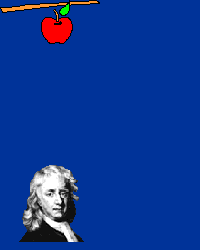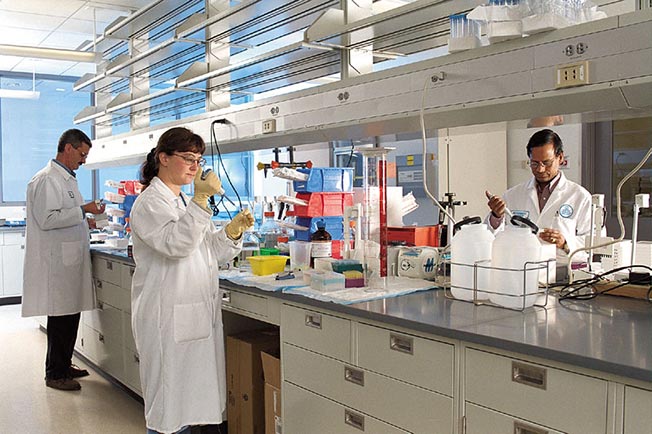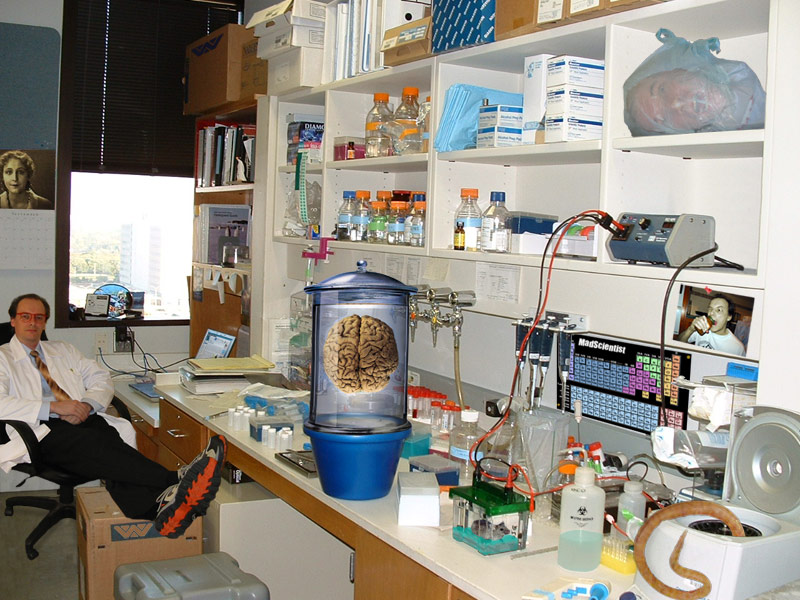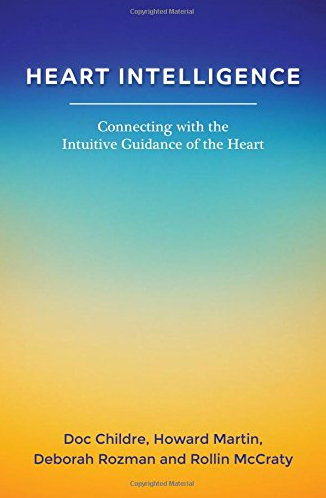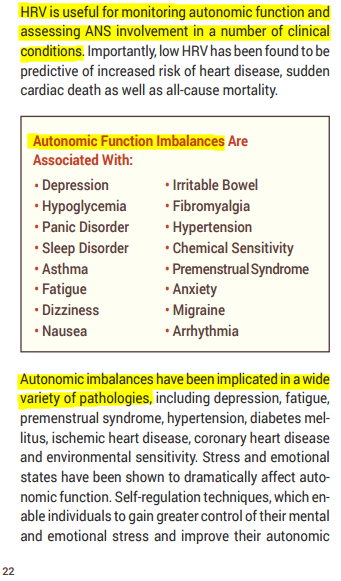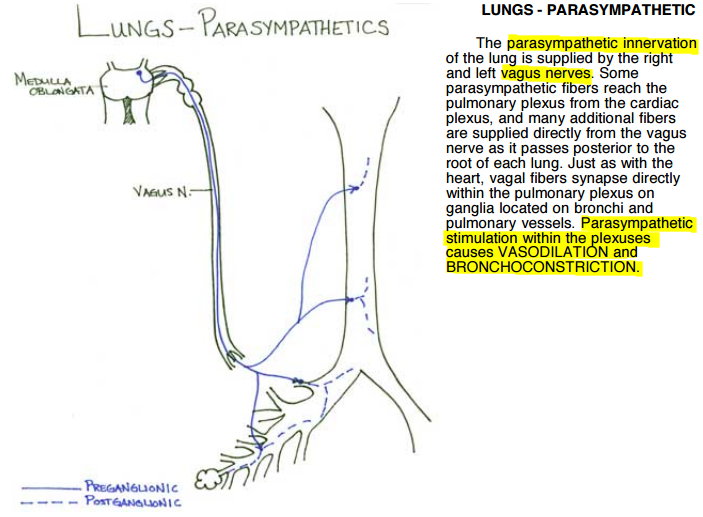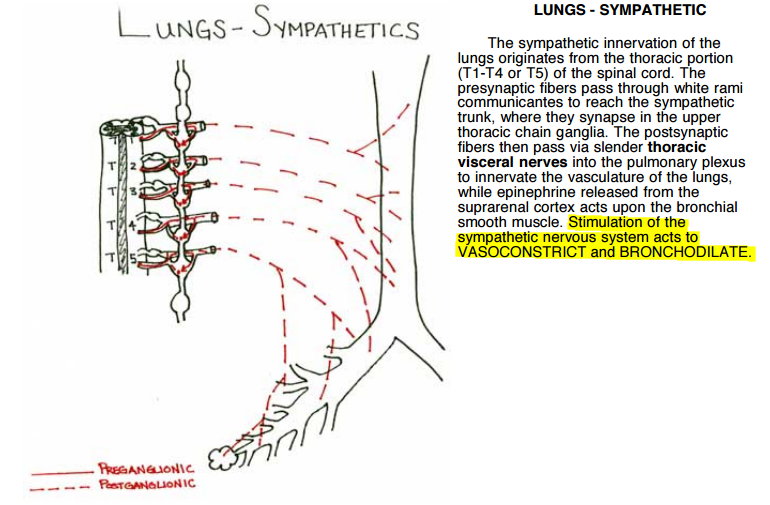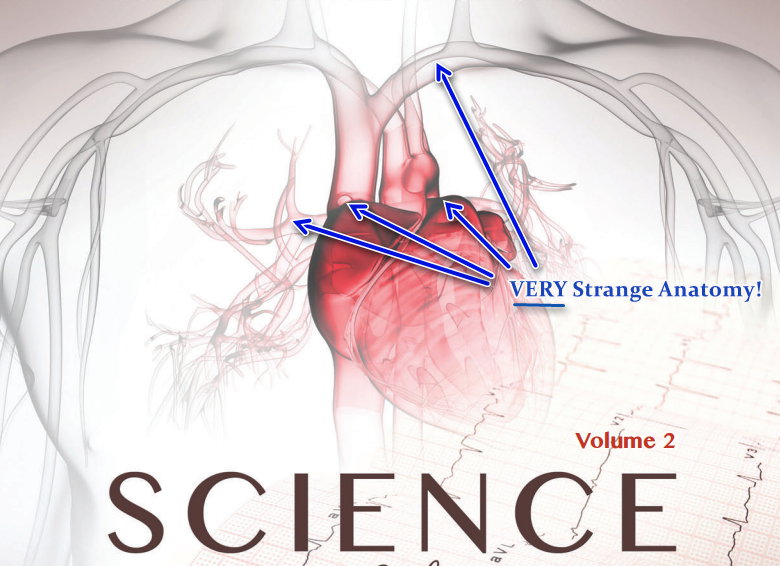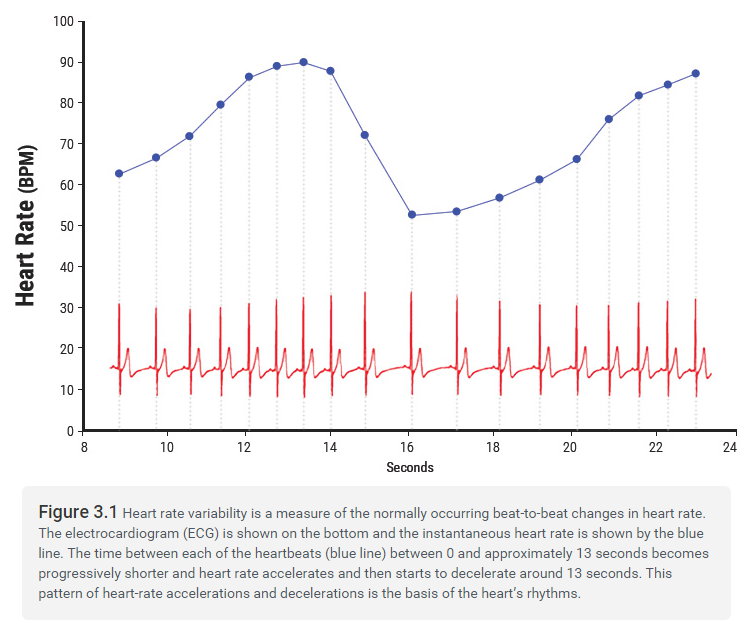The STP Lab
STP Bench Number 4 : "Quantum Activism"
You are here in the STP virtual library.
An article about Sir Isaac Newton preceded this one, serving to open the doors of our library, and focused on exposing not only Newton's life story, a life leading to what people refer to as Classical Physics, but also a life that included his perhaps even greater involvement in spirituality and the occult.
Without a doubt, he is today better known for his Philosophica Mathematica, where laws of motion were posited for the ages to read. But Newton's search for a deeper level of meaning in all of his work and inventions throughout his life (from calculus to optics and telescopes), and evoking a much deeper level of spirituality should, in fairness to Newton and for our benefit, not be forgotten.
In contradistinction, let us move now from the 17th to our own century. Contradistinction certainly in use of scientific language, which has evolved from Newton's day, but is the quest for the central meaning of life, the central driver or spirituality if you like, any different?
And by way of introduction to that word, "quantum," here is an addition to the STP virtual library.
An exerpt from Amit Goswami's book, "How Quantum Activism Can Save Civilization: A Few People Can Change Human Evolution." Goswami is a quantum physicist by training, degree and practice, and more recently, turned a bit philosopher (as we all should).
In subsequent posts, a goal worth pursuing would certainly be to try and present the trail leading from an Isaac Newton to an Amit Goswami. Recall also from history, that whenever a fantastic leap ahead is made in science, once popularized, a crowd forms to latch onto the scientific information, and use it for a whole host of distantly related purposes: This, a phenomenon telling us much less about Science, than about Man.
So by way of introduction ...
How Quantum Activism Can Save Civilization
"In the interconnected oneness of consciousness, connections happen without signals; the technical name for such signal-less connections is quantum nonlocality. As you may know, in Einstein's theory of relativity, all interactions in space and time must occur via signals. Hence, to use the physicist Henry Stapp's words, nonlocal downward causation must take place from "outside" space and time, yet it can bring about an effect, the actuality, in space and time.
Local problems become global very quickly today. The solution of global problems requires no less than global creativity and transformation. How do we bring about transformational change on a global scale? A new kind of spirituality is needed. This is what quantum activism is about.
We need to change our social systems in order to give people opportunity for transformation.
Today's activists have no new paradigms to offer, no new paradigm for conflict resolution or for bridging differences or for demonstrating why arts, humanities, and spirituality are important. In the absence of new organizing paradigms, no long-term solution to the problems we face emerges.
Lack of synchrony between what we believe and how we live is due to the incongruence of our belief system.
We have forgotten to live this fundamental holistic nature of our being. Today our activists, not unlike the purveyors of good versus evil, perpetuate the separateness that creates the problems we want resolved. We supposedly "battle" the perpetrators of the problems, negativity with negativity. Look at the language we use to describe our struggle. It is separatist; we have already lost the wholeness that we wish to accomplish.
While doing a story on Gandhi, a news reporter was quite impressed that the leader spoke at huge gatherings without consulting any notes. When he asked Mrs. Gandhi about this, she said, "Well, us ordinary folks think one thing, say another, and do a third-but for Gandhiji they are all the same." Well, we cannot all be Gandhi overnight, but we can adopt a practice toward that goal. This is what quantum activism is about.
The new paradigm rests on two metaphysical assumptions. One assumption is that consciousness is the ground of all being. This one is age-old, the basis of already mentioned monistic idealism, or perennial philosophy. But our second assumption-that quantum physics is the law of the dynamic movement of possibilities from which consciousness manifests the worlds of our external and internal experiences-is what makes the new paradigm a scientific one. And it is this assumption that opens us to a new avenue of integral living and can guide us in how to institute both individual and social change. To embrace this new integral way of living, in which the goal is to achieve congruence between thinking, living, and livelihood, is one of the avowed objectives of quantum activism.
The word "quantum" literally means "quantity." The physicist Max Planck used the word to denote a discrete quantity of energy. In the year 1900, Planck proposed that the seeming continuity of energy is not the complete story. At its base, energy consists of discrete units that he called quanta. This idea seemed so revolutionary even to Planck himself that he struggled practically his whole life trying to reconcile this idea with his worldview, which was based on the physics that the famous Isaac Newton developed in the 17th century, now called classical physics. Classical physics gave us the great prejudices that these early pioneers of quantum physics struggled to overcome; the same paradigmatic battle continues even today. Among these prejudices are continuity of motion, determinism (the idea that all movements are determined by physical laws), locality (all interactions and communications are mediated by signals passing through space and time), objectivity (objects are independent, separate things), and of course, material monism or materialism (all is matter).
In 1935, Einstein introduced the concept of quantum nonlocality in a paper written with two other physicists, Nathan Rosen and Boris Podolsky, but rejected the idea because it seemed to contradict his prejudice that there can be nothing that is outside the space-time universe. Erwin Schrodinger could not handle the concept of the wave of possibility and tried to ridicule it via his paradox of Schrodinger's cat (see chapter 4). And Bohr felt compelled to assert that a measurement by a Geiger counter is enough to collapse the quantum possibility wave and thus missed a tremendous opportunity to overthrow the materialist worldview long before the 1950s, when it became entrenched.
When I woke up, I had it-the fundamental mystery of creativity and transformation. It is alternative doing and being. Do-be-do-be-do. Combine the strengths of both doing and being. Bring the lessons of quantum physics to creativity.
We have created the problems of our world; we have to recreate the world of solutions. Quantum creativity is our major tool. But that is by no means all of quantum activism. Conventional activism separates, us (those doing right) versus them (the wrongdoers). Quantum physics says that all is movement of consciousness; we are the world. There is no us versus them. There is only movement toward consciousness or away from consciousness, and it is not always easy to distinguish. The only thing of which we can be certain is that when consciousness is nonlocal, it is inclusive. When we practice inclusivity in resolving conflict, we are aspiring toward nonlocal consciousness.
Can we allow our activism to change us while changing the system? This is a tangled hierarchical relationship with the process of change: we recreate us as we recreate the world.
So quantum activism, the quantum manifesto for personal and social change, uses the transformational aspects of quantum physics-downward ward causation, quantum creativity, nonlocality, and the tangled hierarchy of relationship between subject and object-to change ourselves and our society.
In short, we have looked for reality, and it is consciousness in both its manifest and unmanifest (which in quantum physics we call potentia and which psychologists label as the unconscious) aspects! Are you excited? So what do you want to do about it?"
Amit Goswami. How Quantum Activism Can Save Civilization: A Few People Can Change Human Evolution (Kindle Locations 302-303). Kindle Edition.
Do follow along with us here at STP to see how these missing pieces fill in over time.
But especially,
Pre-study our current Target, participate in The Challenge, Each Day with Others at 12:00 noon GMT, and SendThemPeace.
It's the critical reason we're here for, and certainly, the reason you find yourself now at SendThemPeace.com.
Just 20 minutes each day. You'll feel better for it, and it's free.
STP Bench Number 4: The Newtonian vs Psi struggle for Truth.
"Hey, Sir Isaac, .... wassup?
It is "de rigeur" today that any work describing Science's efforts to tack down reality and consciousness, must respectfully abandon Newton and his squarish sort of laws and calculus if it seeks success (and ample sales). Currently, success seems to require that one must quickly pour oneself into the still murky waters of quantum particles and their mechanics. And the transition from Newton, through Einstein, to particle and wave physics: will it succeed finally in showing us all, (if interested), effects that are unanticipated, striking, amazing, seemingly incomprehensible and contrary to logic, but also too small, too fast, too large, too far away, to be of importance to us as we head off to work Monday... and therefore, unimportant from a practical point of view?
Or will it instead, now that the curtain has been pulled back on electromagnetic, subatomic and gravitational events that were always there, even if we didn't know they were there ... quite soon and inescapably change our world, our universe, our human existence and consciousness, markedly, broadly, and forever?
But first, before packing away old squarish Newton for good and good riddance, ... was Sir Isaac such a boring guy that he couldn't even begin to imagine, and accept the existence of, phenomenon that "F=m·a" could not explain? Was he into Psi kind of stuff ?
Apparently so.
Now that all of his personal documents (and through these, his life) are available and better studied (the economist John Meynard Keynes bought most of Newton's documents in 1936, at auction at Sotheby's in London), a new image of Newton emerges. A Sir Isaac Newton who is anything but a curmudgeon, who one might imagine shouting from his bedroom window: "If science hasn't proven it, it doesn't exist and never will!" Instead of dogma, one finds Newton constantly involved in experimentation of all sorts, aimed at defining truths acting in the Universe: Truths of all sorts.
Some of what his personal writings reveal about this patriarch of Science, (born in 1642, the same year Galileo died), is that he may in fact have been quite a bit more than simply an "enlightened rationalist" :
- He predicted the world would end in Armageddon in the year 2060 (even without calculus, one can calculate that's due to arrive in only 44 years).
- "Truth is the offspring of silence, and unbroken meditation" (Newton, at Cambridge), would be one auto-definition of his work habits. "Booze and loose chicks" seemed to be in vogue at Cambridge in his day, but Newton partook of neither.
- As he approached and reacted to René Descartes mechanistic view of the universe, Newton's reaction was that such a view must be tested (in a laboratory, for instance).
- Then the plague struck England, university closed, and Newton returned home to avoid infection and to sit beneath his famous apple tree. He was now convinced that the force making apples drop, and that keeping the moon in orbit, were one and the same: gravity. (The apple-on-the-noggin inspiration story, most expert's are very skeptical of ! ).
- Nevertheless, looking at motion and acceleration of such objects, did lead Newton to develop a new branch of mathematics: calculus. And he loved, calculating! This at age 22.
- He next, with prisms, began investigating light, defining the component colors of white light. Not a big deal? Well in his day it was huge! And people got crazy trying to understand his methods, data, results, and conclusions.
- Return to Cambridge after the plague. Professor of mathematics (same position as Stephen Hawking today, who was born exactly 300 years after Newton's death).
- He built a telescope incorporating mirrors instead of lenses, to avoid the chromatic aberration (false colors that aren't really there) induced by the latter: A revolution from Galileo's telescope. This was a sensation that resulted in his election to the Royal Society of Scientists.
Hold onto your britches and powdered wig ...
- Of course, at about this time (age 26 or so), Newton became an alchemist. WHAT? A phoney-baloney pseudo-scientist? What? Yet another in search of "the philosopher's stone" ? This "stone," once found or refined from corrupt substances of course, was presumed to heal most known illnesses, conferred immortality, and transformed lead and other base metals into pure gold. (Don't our lives today have many of the same goals?) Alchemists at the time, found ample employment (and sources of revenue and bottom line profit) with those (nobles, princes, the rich) who could afford such "science." A maldistribution between the poor and the rich was already in evidence, so some things have not changed for the better. The middle class at that time was small, and did not have much money to waste, unlike today, and so were not targetted by the alchemists in search of a grant. Defrocked alchemists (this research was outlawed because the government thought fake gold would debase the British currency, (but this also suggests that they must have had some confidence in a positive outcome of this research), were hanged when they were caught (on a guilded scaffolding, perhaps their only actual, though terminal, contact with real gold). So putting together a demo, spiel or PowerPoint equivalent, based in alchemical science aimed at getting money out of those who had some, was not risk free in the 17th century.
- Meanwhile, Robert Hook, and others, began to refute all of Newton's work on light, saying he had of course already studied it, and that Newton's work was all wrong. Not well taken by Newton, who was "allergic" to criticism: it prompted his going ballistic (a term certainly not employed in his day). For about 4 years, the citations went back and forth between Newton and Hook to defend the work. Hook never bought it. Deciding he would never publish a scientific paper again, was Newton's final response. So there.
- Deeper into alchemy, Newton believed that deep human wisdom had arisen eons ago before our recorded history, had been lost, and he interpreted Greek drama as recipes for this re-emerging alchemical knowledge. Roman poets (Ovid) as well, were interpreted in the alchemical light by Newton. These he interpreted as a secret cookbook for alchemical processes (such as "The Net of Vulcan" made of copper, iron, fire). This was quite a departure from his "F = m·a" hypotheses, later Law. But actually, perhaps not for Sir Isaac who felt strongly that all these domains arose in the same "active principles of Nature."
- A dangerous secret: As a Fellow at Trinity College, Newton had been required to become a Minister in the Church of England. (Which he hated). He eventually worked towards a conclusion denying the Divinity of Christ. He finds the notion of the Trinity to be a blasphemy on the first Commandmant. "No other Gods before me ..." Of course his new beliefs were illegal in that context, and at that time.
- Yet, Newton wrote more during his life about Theology and Alchemy each, than Science and Math combined. Didn't you learn that in High School? For Newton, Religion and Science were inseparable parts of the lifelong quest to understand the Universe. Many interpreters of Newton's work, especially the French in later years, worked to take God out of Newton's work, and which he would have strongly objected to. Without confidence in the presence of a Prime Mover in his Universe, it is doubtful that his thoughts alone would have lead him to Principia Mathematica. In his more than 1,600 texts in his personal library at Cambridge, Newton owned more than 30 Bibles. And out of these, he calculated when humans came into existence, and when it all would end. He spent 30 years working and reworking these calculations, aiming to translate his intuitions, premonitions, and interpretations of Biblical text, into mathematical reality.
Isaac back on track?
- Edmund Haley (of Haley's Comet fame), visited Newton when the latter was 40 years old. His aim was to explore the inverse square law that force and distance are related in the elliptical orbits of the planets around the sun. (Euclidian geometry, and not calculus). Sir Isaac took a little break from alchemical experiments. The question caught Newton's attention for the next 18 months, and resulted, after volumes of essentially constant work (18 to 20 hours a day, 7 days a week), in the Principia Mathematica. This is his crowning achievement. It contains the Axioms of Motion, offering that motion, whether on Earth or in the heavens, responded to the same laws. (His Three Laws of Motion).
- Out of this, Newton defined gravity as the force keeping objects, including the moon, in orbit around the earth. This was of course a thought experiment, having narry a rocket nearby. He made a daring proposition, hypothesizing that this force operates throughout the Universe. This is his Universal Law of Gravitation ( "Fg = G· [(m1 · m2) / r²] )", expressing the relation of two masses, and the square of the distance between them, to this gravitational force of attraction). This defined: planetary orbits, the ocean tidal movements, etc., ... a total revolution in thought for his time and long after. Newton was well on his way to becoming the Father of Modern Science.
- Hook of course reappeared to become a total pain. Since forces of gravity are invisible, Newton's work was interpreted as occult philosophy. Did he find this "gravity" in his alchemical work, or based in the "Active Principle of Nature"? (These was a mysterious invisible alchemical force at work throughout Nature). Was invisible "gravity" simply more of the same? If so, ... that word "gallows" would have soon come to mind, or at least: "you're fired." Newton was looking for something "quite big," in his alchemical work. The fact that he published nothing about it, suggests that he in fact, in spite of 30 or more years devoted to this field, ( a field totally dismissed and disparaged today unless one considers chemistry its offspring), found nothing "big." Who knows? Are the effects of electromagnetic radiation offered increasingly from numerous directions today, tomorrow's alchemy? In each case there were (and are today) things "to show" to those interested. Then, copper, iron, fire: Now, electrons, magnetic fields, nonlocality, resonance ... but will actual effects on human existence, in both cases, end up in the trashcan? Newton was working in the domain of the occult and psi, where the invisible "active principle" just needed more study to be better defined. He never did get to that definition, discovery, demonstration. And of course, his work on alchemy he kept to himself and his assistants, and never hurt a soul with, besides eventually driving himself nuts for a while. Are such forays to and beyond "the fringe" today, able to make the same claim of benignity?
- This lack of yield from his alchemical work, was more than stressful for Newton. He had what was probably a nervous breakdown, and probably due to exhaustion. Wild accusations against his friends (like John Locke) followed, though Locke eventually forgave him. (He had accused Locke of a direct attack on Newton's "chastity," by building and populating a brothel for Newton's personal use. No data about whether Sir Isaac ever went to check it out or not). Fortunately, the psychiatric illness lasted only a few months. Then again, maybe not. Maybe he developed an alter ego, and remained quite nuts. How would one know for sure? He cleaned up his act, bought some new wigs, moved to London to fill his new appointed position of Master of the Mint (two dozen counterfeiters were executed while he was in charge). Followed: Member of Parliament, President of the Royal Society, and Knighthood. He settled rather comfortably into his iconic (today we might read "establishment") existence, fitting without further argument into his role in London. No more alchemy.
- His text on Optics followed, and included presenting many of his ideas on calculus, forty years after they were conceived. No one said: "that's old hat" since he had kept his calculus all to himself.
- He gave up alchemy, but continued his devotion to Theology until his death in 1727 at age 84, buried in Westminster Abbey, with King's and Queens.
So Isaac wasn't all: "Action equals reaction."
Forays into "the fringe" were also on his calendar, and year after year for quite some time.
Any other conclusions?
Well, one could ask: "How does one know what is mainstream Science and what is "fringe" or just beyond into fancy?
If Newton's life conveys an answer, one part is certainly: "Time Will Tell."
And don't forget:
Pre-study our current Target, participate in The Challenge, Each Day with Others at 12:00 noon GMT, and SendThemPeace.
Have a look at this video, to see the real authors of this material ... quite "enlightening."
How? STP Lab Guidelines & Index of Work
The Challenge at SendThemPeace.com has two components.
In presenting these, habits from past work will surface and be relied upon. Without reporting (or plagiarizing) all of W.Edwards Demings life or work, (he and others have reported that quite well), extracting two sentinel questions has a chance of providing value in our Lab at STP.
The first question is: "By what method?"
The second is: "How would you know?"
If nothing else, vowing a dedication to methods couched in measurement (the answer to the second question), offers the hope and promise that even seemingly insubstantial or immaterial processes can yield desired material effects in our world. Effects such as: Peace. This problem has been further defined in another article, about "Breaking New Ground," and need not be repeated here.
What will be repeated here is our hypothesis at STP :
The Challenge is the proposed method, providing the answer to the first question.
References on this site to "The STP Lab" are to a virtual lab, where several things will happen :
- Studies past and present done by others will be presented to offer background and findings perhaps related to the goal at SendThemPeace.
- These will be presented as though each occupied "a Bench" in the STP Lab. At each Bench, ongoing work is discussed and results presented.
- Work done at each "Bench" will receive an Initial Introduction, and Updates.
- The format for Initial Introductions and Updates will be kept consistent, thereby hoping to make things easier for the reader.
- Actual experiments at STP will be presented, and with an effort made to keep such presentation at least quasi-scientific, and as parts of the answer to "How would you know?"
- To more readily navigate to the various "Benches" where investigations are ongoing or summarized if completed, the present page will also serve as a separate Table of Contents (not the same one as that for all articles on this site), an Index of Work (vide infra), guiding the reader through links to various related aticles.
======================= Index of Work at the STP Lab Benches ===================
Pausing 20 minutes, at 12:00 noon (GMT) to meet The Challenge.
Bench 1 - Initial Introduction - FLOW
Investigation Category Heading : Stress Management, Life and Project Optimization
Principal Investigator : Mikhail Csikszentmihalyi
Domain : Psychology
Hypothesis Being Tested : A relationship exists between personal skill level and task challenge level. The relationship between the two can be used to define degrees of perceived operator stress, contentment, with possible desired effects on creativity and task optimization. An ideal interaction of the two elements exists and can be defined.
Bench 2 - Initial Introduction - M-Fit
Investigation Category Heading : Mindfulness Meditation training for soldiers
Principal Investigator : Elizabeth A. Stanley, Ph.D, Founder & President of Mind Fitness Training Institute (M-Fit)
Domain : Mindfulness, Mind-Body Fitness, Security, Government, Management
Hypothesis Being Tested : Teaching military troops (US Marine and Army Infantry) Mindfulness Meditation practice will result in participants being more completely aware of Self, including auto-assessment and control of autonomic system dysregulation or balance, levels of stress, and can render participants more competent and fit for deployment in combat zones, improving awareness and resilience, and more optimally integrated into society on their return from combat, reducing prevalence of post-combat psychosocial disorders.
Bench 3 - Initial Introduction - HeartMath and Global Coherence Initiative
Investigation Category Heading : HeartMath and Global Coherence -
1) Heart rate variability biofeedback for stress reduction, using the terms "physiologic coherence and psychophysiologic coherence".
2) "Global Coherence" through many participants in #1
Principal Investigators : Doc Lew Childre; Rollin McCraty, Ph.D, Howard Martin, Dorothy Rozman, Ph.D, et al.
Domain : Stress reduction ; Biofeedback ("physiologic and phychophysiologic coherence"); "Personal/ Social/ Global Coherence."
Hypotheses (2) Being Tested :
1) Heart rate variability measurements can be used over time by an individual, to become more aware of autonomic nervous system corrollaries of stress, and shift from higher to lower states of stress through biofeedback. Effects of biofeedback at this Lab Bench are referred to as "coherence," "heart coherence," "heart-brain-coherence," "physiologic coherence," and "psychophysiologic coherence."
2) "Our hypothesis is that as enough individuals increase their heart coherence, it leads to increased social coherence. As a critical mass of cultures and nations become more harmoniously aligned, this can eventually lead to increased global coherence and sustainable peace."
"Using our heart's intuitive guidance will become common sense - based on practical intelligence."
"As more of humanity practices heart-based living, It will qualify the 'rite of passage' into the next level of consciousness." - Doc Childre.
Rollin McCraty presents hypothesis 2) as follows in his presentation (at bottom of this page) :
"The Global Coherence Initiative's Hypotheses:
- Human and animal health, cognitive functions, emotions and behavior are affected by planetary magnetic and energetic fields.
- The earth's magnetic fields are carriers of biologically relevant information that connect all living systems.
- Thus, we each affect the global information field.
- Large numbers of people creating heart-centered states of care, love, and compassion will generate a more coherent field environment that can benefit others and help offset the current planetary-wide discord and incoherence."
STP Bench 3 Update - Data from Drew. An analysis of an emWave2 user's data.
STP Bench 3 Update - a look at HeartMath’s "Achievement" variable when using emWave2.
STP Bench 3 Update - Ripples in the pond - finding one's way back to a Central SCIENTIFIC Observation.
STP Bench 3 Update - Science or Theater? - what viewing a HeartMath Executive's presentation has to teach us.
STP Bench 3 Update - A recent book from HeartMath : "Heart Intelligence" - a Reader's Notes and Review.
Bench 4 - Initial Introduction - The STP Memorial Science Library
We found a little bit of extra room here in the SendThemPeace virtual lab. So Bench #4 was designated as a Science Library.
We are hoping that it will serve to shed light as well as heat in the domain of Science that could eventually contribute to obtaining Peace on our planet Earth.
Part of this will be to point towards works that define "what's new." But let us not forget that in Science, true understanding and especially perspective, might arise years after a works publication. Understanding what made a given researcher "tick" as he/ she became passionate about a subject, may also be both "interesting," but especially "useful" for attaining our goal of Peace.
Often, when scientific work is new, those listening to its enthusiastic presentation don't have a clue about what is being presented. For instance, Newton, frequently lectured to a 100% empty classroom auditorium at Cambridge, since after a while the grapevine had instructed those signing up for his courses: "Don't even bother going."
So the emphasis at lab Bench #4 will be to move out of this aura of "cluelessness" into the light, where many clues may direct us all towards Peace.
And having mentioned Sir Isaac Newton, let's start with this little review of what he has told us about himself through his writings ...
The Newtonian mechanics vs Psi: struggle for Truth - was all his work about "classical physics" (as it came to be called after, and largely because of, Newton)? Or did he dabble a bit in "fringy" kinds of pseudo-science? You may be surprised.
STP Bench 4 Update : "Quantum Activism." Let's now fast forward a few centuries from Newton to our own time. There's that word "quantum" again.
How did we get from Newton to Quantum Physics? That trail we'll pursue later, but for now, read this as an introduction to the topic from Professor Amit Goswami.
STP Bench Number : 3 - A Review of HeartMath's "Heart Intelligence"
"HeartMath," occupying STP Bench Number 3 here in our virtual lab, has a recent book out entitled "Heart Intelligence: Connecting with the Intuitive Guidance of the Heart." Here is a link to HeartMath’s web page to see how they present themselves.
This provided an opportunity to learn what, if anything is new in HeartMath LLC's message, material, outreach and approach. For those who have never read a thing from HeartMath, or don't know HeartMath, this text will serve as a good introduction.
For those who have read their material, especially if that includes Doc Childre's earlier works, and the "HeartMath Solution," well the Reader will not find much that is strikingly new. Nevertheless, such a compilation can when successful, provide a unified sense of a company's message or Gestalt (quite appropriate in the present case).
As is my habit (not always the best, and certainly not time-efficient!) I took my Reader's Notes as I read through this latest work. These may be of use to others, so I have also placed them here.
Be aware at the outset that these Notes occupy 15 pages! But one can read through them rather quickly. Clearly, since I take such Notes primarily for my own personal use (15 pages in 2 years, will be a quicker re-read than the book's 266 pages), these Notes may not serve your needs perfectly.
So here is the link to a PDF version of my Reader’s Notes for "Heart Intelligence." Download it, and read at your leisure, if you prefer to reading it now in the browser tab that will open.
"So, How's the Book?"
I'll start with a quote from Doc Childre at the end of the book and my Reader's reaction:
“Many of us have committed to giving peace a chance but peace is waiting on us to take the first responsible step: Now it's time to give love a chance— then peace will join us at the table for celebration.”
Reader’s reaction and opinion: I find Childre’s ending (this phrase and more, that appears above this line in the book) to this multi-authored book (always a quality challenge for the editor) quite well-written and strong. It prompts one to want to send messages of encouragement for such information and communication from one person who has thought things through, to the many who have not, and could benefit from reading some Childre.
This source (Childre) will have a much greater chance of contributing to Peace in our world, than all the magnetomers that a whole army could sink into the ground. Why? Because the former has the right motivation, while the latter is obviously tied to too many other agendas. In the scientific domain, output based on a broad-based and well instructed foundation, seems too often missing here. Thinking that one will become known by the company one keeps as a scientist doesn't work. Scientific investigation is not a process that rubs off onto one, it's a vocation. In fact, true Science will invariably leave its "practitioner" (researcher, if you prefer), inescapably exposed. If you have the vocation, you know that comes with the turf and almost welcome it. If you don't have that vocation, and lack especially the deeply-rooted foundations to keep your hypothesis upright, it will become painfully clear soon enough. It's just a matter of time, aided by those who patiently test to see if they can duplicate your results, or if your card castle comes crashing down. It's not for dabblers. But if one prefers to leave the rigorous, linear, coldly analytical processes of Science behind, finding its methods a bit oldish, in favor of more up to date flights of fancy, ... well, that's another quantum story.
All material cited in quotations, and graphic results included in these attached Reader's Notes are the intellectual property of the following authors and the Institute of HeartMath and HeartMath LLC. The author of these Reader's Notes assumes no responsibility for the content of "Heart Intelligence: Connecting with ..., etc."
Childre, Doc; Martin, Howard; Rozman, Deborah; McCraty, Rollin (2016-02-14). Heart Intelligence: Connecting with the Intuitive Guidance of the Heart. Waterfront Press.
This reading and review of this work was of use here at STP, and hope it can be of use to others.
Good reading! Of either these Reader’s Notes, or buy the book (on Amazon, of course), or both.
HeartMath : Science or Theater?
STP Lab Bench Number : 3 - an Update
In the previous Article the effect of influenza on Heart Rate Variability began to be explored, as emWave2 "Achievement" levels began to go berserk. In addition, HeartMath techniques like "Quick Coherence" seemed to become 100% ineffective for attaining "Coherence."
Clearly, such effects of illness must be covered by HeartMath in its new (Nov., 2015) Science-of-the-Heart-vol-2.pdf. Have a look like I did. Well it turns out that there is no mention of influenza as affecting Heart Rate Variability or the Autonomic Nervous System in HeartMath's latest Science of the Heart ! (see p.22)
Now why would that be? Even though not clinicians nor pathologists, as far as we know, there is no hesitancy about mentionning diagnoses such as Hypoglycemia, Asthma, Migraine and Depression, yet nothing on a diagnosis as common as influenza.
This is clearly a higher prevalence than many diagnoses selected in the list at right, yet autonomic imbalance plays a major role in influenza, as we shall see below, and effects the heart directly. Do they know that at HeartMath? No idea.
But let's move on. Who says that influenza has any effect on the Autonomic Nervous System?
Well, these folks for one: Host-Response-to-Influenza-Virus---Protection-versus-Immunopathology.pdf with a message being that while the virus itself can cause direct damage to respiratory passages like trachea and bronchi, with respiratory deaths being the most commonly assocaited with influenza, the host's response to the viral attack causes serious problems as well. This includes changes in Heart Rate Variability mediated via direct effeects on the Autonomic Nervous System as well as the cellular and cytokine components of the immune system.
The Sympathetic Nervous System can overrespond to attack by influenza, exacerbating the viral damage. Clearly, the autonomic nervous system is a critical responder:
"Finally, our findings emphasize the delicate balance that the immune system must achieve in responding to viral infections. Unchecked rapid replication of IAV and other cytopathic viruses for just a few days would overwhelm the ability of the host to replace dead cells. On the other hand, an overly robust host response can cause collateral damage sufficient to enhance lethality. We show that the SNS can play an important role in innate autoimmune immunopathology and raise the possible benefit of α-adrenergic antagonist drugs for treating highly pathogenic IAV infections."
The effects of the Sympathetic Nervous System on lung and airway function do not await the arrival of virus particles. The SNS is quite busy normally, as one can see below:
For those with asthma, the Sympathetic Nervous System is of course essential to dilating bronchioles, and asthma medicines are aimed at doing the same thing and relieving asthma attacks through bronchodilatation. Again, this is the Sympathetic side of the ANS, and not the Parasympathetic side emphasized by HeartMath's "Quick Coherence" and other techniques :
Here are some pencil drawings to better understand the related anatomy of the two components of the autonomic nervous system and what stimulating these nerves has as effects on the lung. This is quite critical in influenza where the pulmonary system is the primary system under initial attack by the virus.
As I looked through the 99 pages of HeartMath's Science of the Heart, vol.2
certain things seemed more and more striking... For instance, starting with the cover :
I don't recall ever seeing an aortic arch and surrounding vasculature that looked like that! Very strange anatomy, but perhaps an effect of too much "Coherence" practice?
Here's a little something more anatomic for comparison ...
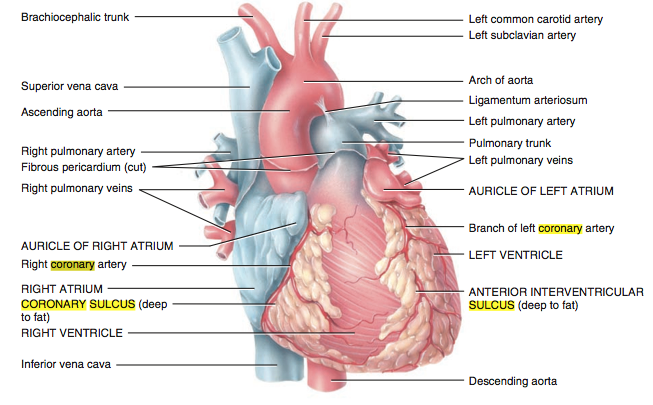 Then as I kept reading, in search of more information on influenza and Heart Rate Variability, I came across this diagram that seeks to explain how heart beats vary in speed from beat-to-beat. And while "Figure 3.1" on page 13 gets some of this idea across, I was dumbfounded to read their explanation and see their graphic:
Then as I kept reading, in search of more information on influenza and Heart Rate Variability, I came across this diagram that seeks to explain how heart beats vary in speed from beat-to-beat. And while "Figure 3.1" on page 13 gets some of this idea across, I was dumbfounded to read their explanation and see their graphic:
"Figure 3.1. Heart rate variability is a measure of the normally occurring beat-to-beat changes in heart rate. The electrocardiogram (ECG) is shown on the bottom and the instantaneous heart rate is shown by the blue line. The time between each of the heartbeats (blue line) between 0 and approximately 13 seconds becomes progressively shorter and heart rate accelerates and then starts to decelerate around 13 seconds. This pattern of heart-rate accelerations and decelerations is the basis of the heart’s rhythms."
When one speaks (or writes) of "heart rhythms," that term is is not used with reference to heart beats nor accelerations or decelerations as presented here. For example: one "heart rhythmn" is "Normal Sinus Rhythm." Another would be "Sinus Arrhythmia," or "Sinus Tachycardia." Other examples: "Atrial Fibrillation," or "Atrial Flutter," or "Ventricular Bigeminy," or "Ventricular Fibrillation." I could give other examples, but this may be enough to underscore that what Rollin McCraty, Ph.D. has written has nothing to do with "heart rhythm." Instead, it has to do with "heart rate." Is that important? Well, if you were a Medical Student, you would quickly learn to avoid confusing the two, and especially to avoid looking like a Bozo in front of one's peers.
Then I couldn't believe my eyes. The ECG tracing (in red at the bottom) that he has selected to teach normal Heart Rate Variability, is anything but normal!
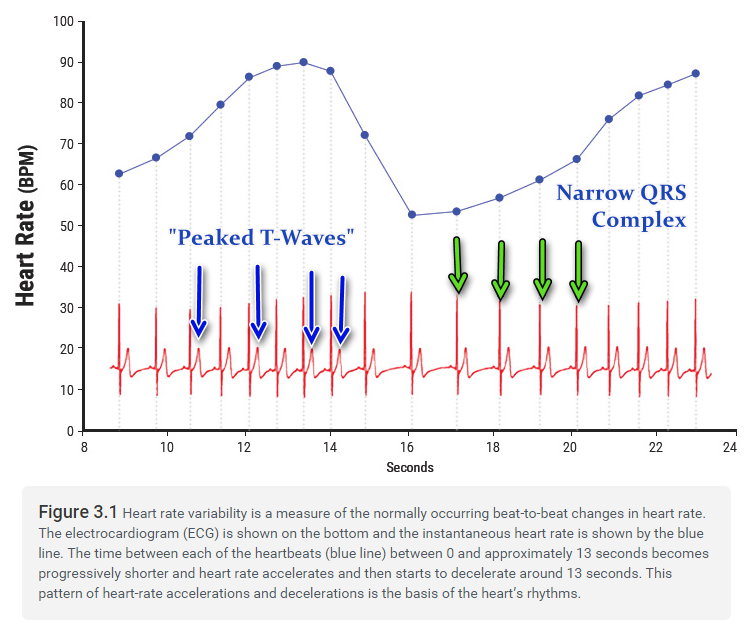 What the ECG tracing shows is two things: 1.) "Peaked T-Waves" as indicated above. This finding is associated with hyperkalemia (too much potassium in the blood. And 2.) An extremely narrow QRS complex, as seen in hypocalcemia (too little calcium in the blood). So what? Well this isn't a good teaching tracing at all.
What the ECG tracing shows is two things: 1.) "Peaked T-Waves" as indicated above. This finding is associated with hyperkalemia (too much potassium in the blood. And 2.) An extremely narrow QRS complex, as seen in hypocalcemia (too little calcium in the blood). So what? Well this isn't a good teaching tracing at all.
What should be done?
First, go see if the patient is still alive. Second, draw a stat set of electrolytes to confirm what the actual blood levels are. Third, begin urgent treatment. Fourth, throw this graphic away, since it isn't teaching something normal, but something quite abnormal. What a surprise since Heart Rate Variability seems such a central theme at HeartMath.
And here, for comparison, is a tracing that could be used to explain normal Heart Rate Variability but without the weird wave forms.
While presenting page after page on Heart Rate Variability and the Autonomic Nervous System, how surprising to find that Dysautonomias (dysfunctions of the autonomic nervous system) and Tests for Dysautonomias do not figure among the "Autonomic Function Imbalances" that HeartMath addresses in their Science of the Heart, vol.2.
Testing the autonomic nervous system consists of a well-established series of autonomic tests that are further described in these two references for those with additional interest.
The first reference gives an example (quoted below) of a test that HeartMath has incorporated into its "Quick Coherence" technique (presented in the last article).
This test is but one of many tests presented in the 1st article above. This particular respiratory test has been known and practiced for years in evaluating dysautonomias. No, it did not originate at HeartMath.
What was or was not developed at HeartMath is not always clear.
In presenting "The Brain in The Heart," HeartMath gives the impression that those affiliated with it have discovered that the heart contains ganglia that somehow make it a control center of cardiac function, essentially independent of the brain and somehow more important. Nonsense of course. The parts of our body work in synergy and all functions are essential. And no, HeartMath was neither the first nor the only ones to have noticed intracardiac ganglia that interact with the sinoatrial node to control heart rate, read the article about pulmonary vein ganglia at this link to confirm this impression. What HeartMath "sees" or "selects to see" and present is once again, like doing research to prove what one already believes, rather than finding out the Truth, which is what one should believe based on well-controlled results ...
HeartMath seems a peculiar blend of Science and Theater.
Probably not a coincidence, while studying Science of the Heart, vol2., I came upon a reference to another member of the HeartMath team: Bruce Cryer.
He is described as "a founder" and HeartMath President & CEO of HeartMath LLC. And further :
So to have evolved this level of dedication to patient care, Bruce Cryer must certainly be a physician, or at least a lab technician, or X-Ray technician, or Nurse, or electrical engineer, or, or, ... well, no. None of the above.
Bruce Cryer has a B.A. degree in Theater Arts from Oberlin College (1971-1974). He also liked to study French when at Milburn High School (1969-1971).
He summarizes his training that led to his abilities to explain Heart Rate Variability and the Autonomic Nervous System as follows:
But don't let me bias you the reader. Have a look at at least some of Bruce Cryer's presentation here below, noting carefully where he attributes certain domains like Heart Rate Variability to Institute of Heartmath and his work there.
How can one possibly react to this?
Perhaps because Mr. Cryer's background is in the Dramatic Arts, I found myself thinking of lines from well-known movies, or well-known actors:
- "Round up the usual suspects." (Casablanca - 1939)
- "Pay no attention to that man behind the curtain!" (The Wizard of Oz - 1939)
- "If you can't dazzle them with brilliance, baffle them with bullshit." (W.C. Fields)
We will come back to influenza, HRV, the autonomic nervous system's response to influenza, but the HeartMath presentation of the Science of the Heart, vol. 2, was simply getting to be too much.
At times when such material is presented as "leading edge," there exists no better direction than to retreat into the past for guidance:
Unfortunately, some of the webs being spun here are pretty sticky. One risks getting caught up in one's own crafty handiwork.
Other related articles at Bench #3:
Bench #3 Update : emWave2 data from Drew
Bench #3 Update : what does HeartMath emWave2 "Achievement" mean?
Bench #3 Update : Ripples in the Pond
Bench #3 Update : emWave2 - One variable too many
and, ...
To the Top of This Page

